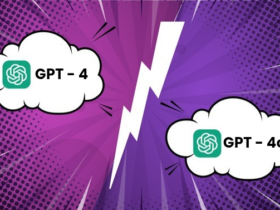Artificial Intelligence (AI) has moved from a futuristic idea to a powerful force changing industries worldwide. AI-driven solutions are transforming how businesses operate in sectors like healthcare, finance, manufacturing, and retail. They are not only improving efficiency and accuracy but also enhancing decision-making. The growing value of AI is evident from its ability to handle large amounts of data, find hidden patterns, and produce insights that were once out of reach. This is leading to remarkable innovation and competitiveness.
However, scaling AI across an organization takes work. It involves complex tasks like integrating AI models into existing systems, ensuring scalability and performance, preserving data security and privacy, and managing the entire lifecycle of AI models. From development to deployment, each step requires careful planning and execution to ensure that AI solutions are practical and secure. We need robust, scalable, and secure frameworks to handle these challenges. NVIDIA Inference Microservices (NIM) and LangChain are two cutting-edge technologies that meet these needs, offering a comprehensive solution for deploying AI in real-world environments.
Understanding NVIDIA NIM
NVIDIA NIM, or NVIDIA Inference Microservices, is simplifying the process of deploying AI models. It packages inference engines, APIs, and a variety of AI models into optimized containers, enabling developers to deploy AI applications across various environments, such as clouds, data centers, or workstations, in minutes rather than weeks. This rapid deployment capability enables developers to quickly build generative AI applications like copilots, chatbots, and digital avatars, significantly boosting productivity.
NIM’s microservices architecture makes AI solutions more flexible and scalable. It allows different parts of the AI system to be developed, deployed, and scaled separately. This modular design simplifies maintenance and updates, preventing changes in one part of the system from affecting the entire application. Integration with NVIDIA AI Enterprise further streamlines the AI lifecycle by offering access to tools and resources that support every stage, from development to deployment.
NIM supports many AI models, including advanced models like Meta Llama 3. This versatility ensures developers can choose the best models for their needs and integrate them easily into their applications. Additionally, NIM provides significant performance benefits by employing NVIDIA’s powerful GPUs and optimized software, such as CUDA and Triton Inference Server, to ensure fast, efficient, and low-latency model performance.
Security is a key feature of NIM. It uses strong measures like encryption and access controls to protect data and models from unauthorized access, ensuring it meets data protection regulations. Nearly 200 partners, including big names like Hugging Face and Cloudera, have adopted NIM, showing its effectiveness in healthcare, finance, and manufacturing. NIM makes deploying AI models faster, more efficient, and highly scalable, making it an essential tool for the future of AI development.
Exploring LangChain
LangChain is a helpful framework designed to simplify AI models’ development, integration, and deployment, particularly those focused on Natural Language Processing (NLP) and conversational AI. It offers a comprehensive set of tools and APIs that streamline AI workflows and make it easier for developers to build, manage, and deploy models efficiently. As AI models have grown more complex, LangChain has evolved to provide a unified framework that supports the entire AI lifecycle. It includes advanced features such as tool-calling APIs, workflow management, and integration capabilities, making it a powerful tool for developers.
One of LangChain’s key strengths is its ability to integrate various AI models and tools. Its tool-calling API allows developers to manage different components from a single interface, reducing the complexity of integrating diverse AI tools. LangChain also supports integration with a wide range of frameworks, such as TensorFlow, PyTorch, and Hugging Face, providing flexibility in choosing the best tools for specific needs. With its flexible deployment options, LangChain helps developers deploy AI models smoothly, whether on-premises, in the cloud, or at the edge.
How NVIDIA NIM and LangChain Work Together
Integrating NVIDIA NIM and LangChain combines both technologies’ strengths to create an effective and efficient AI deployment solution. NVIDIA NIM manages complex AI inference and deployment tasks by offering optimized containers for models like Llama 3.1. These containers, available for free testing through the NVIDIA API Catalog, provide a standardized and accelerated environment for running generative AI models. With minimal setup time, developers can build advanced applications such as chatbots, digital assistants, and more.
LangChain focuses on managing the development process, integrating various AI components, and orchestrating workflows. LangChain’s capabilities, such as its tool-calling API and workflow management system, simplify building complex AI applications that require multiple models or rely on different types of data inputs. By connecting with NVIDIA NIM’s microservices, LangChain enhances its ability to manage and deploy these applications efficiently.
The integration process typically starts with setting up NVIDIA NIM by installing the necessary NVIDIA drivers and CUDA toolkit, configuring the system to support NIM, and deploying models in a containerized environment. This setup ensures that AI models can utilize NVIDIA’s powerful GPUs and optimized software stack, such as CUDA, Triton Inference Server, and TensorRT-LLM, for maximum performance.
Next, LangChain is installed and configured to integrate with NVIDIA NIM. This involves setting up an integration layer that connects LangChain’s workflow management tools with NIM’s inference microservices. Developers define AI workflows, specifying how different models interact and how data flows between them. This setup ensures efficient model deployment and workflow optimization, thus minimizing latency and maximizing throughput.
Once both systems are configured, the next step is establishing a smooth data flow between LangChain and NVIDIA NIM. This involves testing the integration to ensure that models are deployed correctly and managed effectively and that the entire AI pipeline operates without bottlenecks. Continuous monitoring and optimization are essential to maintain peak performance, especially as data volumes grow or new models are added to the pipeline.
Benefits of Integrating NVIDIA NIM and LangChain
Integrating NVIDIA NIM with LangChain has some exciting benefits. First, performance improves noticeably. With NIM’s optimized inference engines, developers can get faster and more accurate results from their AI models. This is especially important for applications that need real-time processing, like customer service bots, autonomous vehicles, or financial trading systems.
Next, the integration offers unmatched scalability. Due to NIM’s microservices architecture and LangChain’s flexible integration capabilities, AI deployments can quickly scale to handle increasing data volumes and computational demands. This means the infrastructure can grow with the organization’s needs, making it a future-proof solution.
Likewise, managing AI workflows becomes much simpler. LangChain’s unified interface reduces the complexity usually associated with AI development and deployment. This simplicity allows teams to focus more on innovation and less on operational challenges.
Lastly, this integration significantly enhances security and compliance. NVIDIA NIM and LangChain incorporate robust security measures, like data encryption and access controls, ensuring that AI deployments comply with data protection regulations. This is particularly important for industries like healthcare, finance, and government, where data integrity and privacy are paramount.
Use Cases for NVIDIA NIM and LangChain Integration
Integrating NVIDIA NIM with LangChain creates a powerful platform for building advanced AI applications. One exciting use case is creating Retrieval-Augmented Generation (RAG) applications. These applications use NVIDIA NIM’s GPU-optimized Large Language Model (LLM) inference capabilities to enhance search results. For example, developers can use methods like Hypothetical Document Embeddings (HyDE) to generate and retrieve documents based on a search query, making search results more relevant and accurate.
Similarly, NVIDIA NIM’s self-hosted architecture ensures that sensitive data stays within the enterprise’s infrastructure, thus providing enhanced security, which is particularly important for applications that handle private or sensitive information.
Additionally, NVIDIA NIM offers prebuilt containers that simplify the deployment process. This enables developers to easily select and use the latest generative AI models without extensive configuration. The streamlined process, combined with the flexibility to operate both on-premises and in the cloud, makes NVIDIA NIM and LangChain an excellent combination for enterprises looking to develop and deploy AI applications efficiently and securely at scale.
The Bottom Line
Integrating NVIDIA NIM and LangChain significantly advances the deployment of AI at scale. This powerful combination enables businesses to quickly implement AI solutions, enhancing operational efficiency and driving growth across various industries.
By using these technologies, organizations keep up with AI advancements, leading innovation and efficiency. As the AI discipline evolves, adopting such comprehensive frameworks will be essential for staying competitive and adapting to ever-changing market needs.













